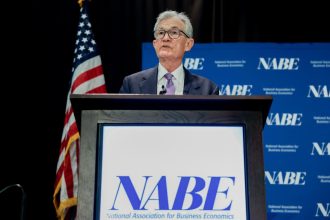Making the decision to start investing is one of the best decisions you can make. Investing is an important step toward building wealth and achieving your financial goals. However, successful investing can be difficult and there are some key mistakes you’ll want to avoid.
Here are the top seven investment mistakes beginners make when they start investing.
1. Waiting to get started investing
There can be a lot of reasons not to start investing, especially when you’re early in your career. You may be starting with a relatively low salary and it may not have a lot of extra savings each month to invest. But saving and investing whatever you can, even if it’s small, when you’re young will set you up for success down the road.
Money you invest in your 20s has more time to compound and grow than money you invest later on when you’re closer to retirement age. A $1,000 investment when you’re 22 years old that grows at 10 percent annually will be worth a little more than $45,250 when you’re age 62. If you wait 10 years to invest at age 32, that $1,000 turns into just $17,450 at age 62. Those first 10 years are important for compounding wealth.
2. Trying to time the market
One of the most common mistakes investors make is trying to time the market. Timing the market involves jumping in and out of stocks based on your predictions about where prices are headed next. Recession on the way? Sell! Nothing but growth ahead? Buy!
In theory, it sounds simple and easy, but in reality it’s far more difficult. Investors who try to time the market risk missing out on gains and often end up buying at much higher prices. The stock market often moves in ways that are far from obvious.
Imagine an all-knowing genie told you about the pandemic that would hit in early 2020. You probably would have thanked them and sold your stocks. Sure you would have avoided the initial decline, but you likely would have missed out on major gains in the second half of 2020 and beyond.
For most people, a far better approach would be to make consistent contributions over time, allowing your portfolio to benefit from dollar-cost averaging, which has proven to be a successful long-term investment approach.
Need an advisor?
Need expert guidance when it comes to managing your investments or planning for retirement? Bankrate’s AdvisorMatch can connect you to a CFP® professional to help you achieve your financial goals.
3. Failing to get an employer match
Many employers offer to match a portion of their employees’ retirement contributions and investors would be wise to take advantage of the match. Experts say that an employer match is like “free money” that you don’t want to leave on the table.
Here’s how an employer match might work. An employer might agree to match 50 percent of the employee’s retirement contribution up to the first 6 percent of the employee’s pay. You should make sure that you’re contributing at least enough money to receive the full matching contribution from your employer. It’s like earning a guaranteed 50 percent return on your contributions.
4. Not investing IRA contributions
Another mistake that beginner investors sometimes make is failing to actually invest contributions they make to their traditional or Roth IRA. Contributing to an IRA is one of the best things you can do to boost your retirement savings, but it’s critical to understand that the IRA is not an actual investment.
Once you’ve contributed to an IRA, you’ll need to purchase an investment such as an ETF or mutual fund that holds stocks or bonds. You can also use an IRA to purchase individual stocks or bonds, but those purchases require more research and are typically better suited for experienced investors. Low-cost index funds are a good fit for IRAs because they give investors a diversified portfolio that doesn’t require much in the way of financial expertise.
5. Investing in something you don’t understand
Markets are full of interesting opportunities and there are always analysts and commentators willing to offer tips on what might be the next great investment. But only investing in things that you understand is a good approach to follow.
Investing in something you don’t understand may seem fine as long as the price is going up, but what happens when the price is going down? Having a solid understanding of a stock’s underlying business is what gives you the conviction to stick with an investment even if the stock has declined since you bought it.
Sometimes it can be helpful to ask yourself if you’d be comfortable buying more of an investment if the price went down by 20 percent. If the answer to that question is “no,” you probably don’t understand it well enough to own it at all.
6. Paying too much in fees
Many investors get started by investing in funds that offer a diversified portfolio, but not all funds deliver great returns for their shareholders.
Actively managed funds attempt to outperform the returns of broad market indexes such as the S&P 500, but the vast majority of them fail to do so over the long term. In addition to this underperformance, active funds also charge significant fees, often approaching one percent annually. Fees eat into the returns that shareholders ultimately earn and can be a major drag on your investment performance.
Taxes can also be thought of as a fee, and many new investors trade in and out of positions frequently without understanding that they’re realizing gains that will be taxed. Adopting a buy and hold mentality is more tax efficient because you don’t pay taxes until you realize gains by selling a position.
7. Being overly concentrated in a single investment
Another mistake beginner investors can make is having too much of their portfolio in a single investment. Sometimes people are introduced to investing because they want to invest in a specific company such as Apple or Tesla. If the stock performs well, it can grow to make up a significant portion of your portfolio.
But having a lot of your portfolio in a single stock increases the degree to which your future returns rely on that single investment. It’s often far better to build a diversified portfolio that includes stocks from different sectors and industries, so you aren’t exposed as much if a single company suffers declines.
Bottom line
Investing is a great way to build wealth over time. Don’t get too caught up in whether or not now is the perfect time to invest. The important thing is to get started, develop a plan for regular contributions and build a diversified portfolio. New investors may find it helpful to speak with a financial advisor about their unique situation. Bankrate’s financial advisor matching tool can help you find an advisor in your area.
Editorial Disclaimer: All investors are advised to conduct their own independent research into investment strategies before making an investment decision. In addition, investors are advised that past investment product performance is no guarantee of future price appreciation.
Read the full article here














